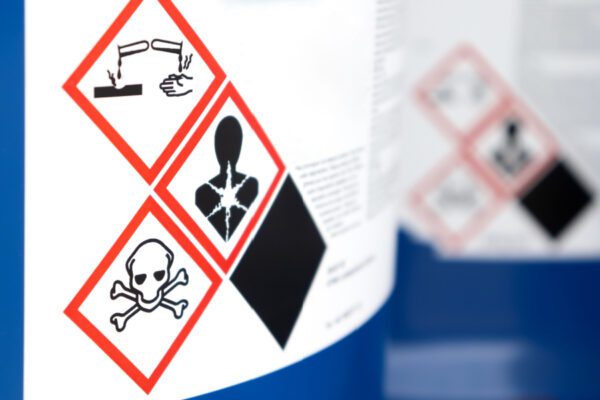Various businesses have fought for years to prevent unexpected discharges of poisonous, flammable, or reactive gases and liquids in hazardous chemical processes. These emissions can cause environmental disasters, employee safety, and public health.
As a result, the government requires businesses to follow an extremely strict set of criteria designed to limit hazards and mitigate risks.
What is Process Safety Management?
OSHA created Process Safety Management, also known as PSM, to assist businesses in enhancing employee safety when exposed to hazardous chemicals, particularly those that are poisonous, flammable, explosive, and reactive. This management program focuses on all operations related to using, handling, storing, moving, and producing chemicals that are deemed to be highly hazardous.
Unexpected spills or leaks of those chemicals can happen anytime, but various enterprises can protect their workers from injury by attempting to reduce the likelihood of those occurrences.
How Do Process and Occupational Safety Differ?
According to Oil Gas Facilities, although process and occupational safety management are sometimes conflated, the two systems can be distinguished by the severity of failure they aim to avoid. The goal of process safety management is to stop significant catastrophes like explosions. Conversely, occupational safety management focuses on preventing more individual-level safety accidents, like falls. While Process Safety concerns typically call for higher-level solutions, Occupational Safety hazards are more frequent yet can often be addressed by lesser-scale actions. Process safety and occupational safety are related to what you are doing, while they are not, to put it simply.
Why Is Process Safety Management Important?
The 1989 Phillips catastrophe was one of the primary impetuses for OSHA’s creation of PSM. Twenty-three employees perished, and 132 were injured in an explosion and fire at the Houston Chemical Complex (HCC) of the Phillips 66 Company in October of that year. The incident also caused $750,000,000 in property damage and an OSHA penalty of $4,000,000.
Nevertheless, a second catastrophe at the BP Texas City refinery in 2005 resulted in the deaths of 15 workers and the injuries of 180 more, even after OSHA had issued the PSM standard in 1992. The corporation was required to compensate the disaster victims and their families for $2,000,000,000. BP also spent more than $1 billion on repairs and lost revenues.
When is a Process Safety Management program required?
When the manufacturing of highly hazardous chemicals is required or when hazardous chemicals are a consequence of a process, OSHA mandates the use of process safety management. One hundred thirty substances are categorized as being extremely dangerous. A process safety management system is required to prevent accidents after the possession threshold limitations are exceeded or if the site holds 10,000 pounds or more of a Category 1 flammable gas or liquid with a flashpoint below 100 °F.
PSM protocols are not required for moving or storing flammable liquids with flashpoints below 100 °F as long as they can be kept below boiling temperatures without refrigeration.
Retail establishments, oil, and gas well drilling, oil and gas servicing, or typically uninhabited facilities do not require the implementation of process safety management. This guideline does not cover hydrocarbon fuels used in the workplace for heating or gasoline refilling, albeit potentially hazardous.
Process Safety Management + OSHA Compliance
Observing the 29 CFR 1910.119 regulation set forth by OSHA can help to lower overall risk in potentially dangerous circumstances. When a business follows OSHA’s guidelines for process safety management, disasters involving these hazardous substances are less likely to occur. The risk mitigation strategies also aid in educating staff members and those in the immediate area about potential hazards and how to avoid them.
The 14 PSM Elements
OSHA’s process safety management standard contains 14 elements that must be present for a PSM program to be effective once an organization has decided it needs to create one to protect its workers. Although this is not a comprehensive list of details on the OSHA-required standard, it does provide the basics of those 14 elements:
1. Employee Participation
The PSM program and its components should be explained to every person involved in facility operations. In meetings where PSM is discussed, employees must also be represented. The following PSM components should each have a knowledgeable team to work with.
2. Process Safety Information
The employer must compile all relevant data regarding hazardous chemicals into a written document for reference. Before any process hazard analysis is finished, this must be done. Information about the substances, technologies, and tools utilized in the process must be included in the document.
Toxicity information, permitted exposure limits, physical data, reactivity data, corrosivity data, thermal and chemical stability data, and hazardous effects of unintended mixing of different materials must all be included in information on the dangers of HHCs. The risks aspect of the PSM element might be considered satisfied if the site uses safety data sheets that meet the requirements of OSHA’s hazard communication standard.
3. Process Hazard Analysis
The goal of this type of analysis, which must be carried out once every five years, is to rank the most significant risks while tackling the most pressing ones first. An engineering and maintenance team and at least one skilled employee with expertise in that procedure must do the analysis. They will start working to locate, assess, and ultimately manage the danger already there.
4. Operating Procedures
The facility must address the initial process setup and starting instructions, regular and temporary operating circumstances, and regular and emergency shutdown situations for each operational phase. All operators must understand these conditions to recognize when things stray from the standard and learn how to stop them from happening.
5. Training
Employer provided operator training will focus on the process’ unique safety and health risks, safe work practices, and emergency response procedures. At the very least, refresher training will be offered every three years. After the training, records must be retained, including the date and a way to confirm that the employee comprehended the safety instruction.
6. Contractors
The employer must examine the performance and programs of the contract’s safety department. The employer must inform the contractors of the potential risks posed by the hazardous chemicals and develop safety procedures. All other contractors will be informed of this information before the start of work.
7. Pre-startup Safety Review
Chemical safety managers must complete a pre-startup safety review for new and modified plants. The PSSR should attest that all personnel training has been completed, operational procedures have been developed, and construction and equipment comply with design requirements. A PHA must be met for new facilities, and a MOC protocol must be followed for modified facilities.
8. Mechanical Integrity
Regular inspections and documentation are required for pressure values, storage tanks, pipe systems, relief and vent systems and their components, emergency shutdown systems, controllers, and pumps. The methods for inspecting this equipment must be detailed in writing and adhere to generally recognized good engineering principles.
9. Hot Work Permit
A hot work permit is issued whenever hot work operations are carried out on or close to a process. Before obtaining or issuing a hot work permit, chemical safety managers must ensure that the Welding, Cutting, and Brazing OSHA standards’ fire prevention and protection requirements have been applied. This will be confirmed by the hot work permission, which lists the hot work-authorized date(s) and the object(s) to be worked on.
10. Management of Change
Changes in technology, equipment, and other necessary operations must be managed according to a standard protocol. The technological foundation for the change, its effect on employee safety and health, the operational adaptations needed, the time frame required for the changes, and the necessary authorizations must all be taken into account by the employer.
11. Incident Investigation
An inquiry must be conducted within 48 hours of an event or near-miss involving the release of hazardous substances. The incident report must include the date, a description, any contributing causes, and any suggestions that came from it. Following the occurrence, these reports must be retained for at least five years.
12. Emergency Planning and Response
Employers must create a hazardous waste emergency response plan in line with 29 CFR 1910.38, and they may additionally be required to follow 29 CFR 910.120.
13. Compliance Audits
The employer must check that all practices and procedures under 1910.119 are followed every three years. The two most recent audits must be kept on file by the employer.
14. Trade Secrets
Employers must disclose the information specified in the preceding sections despite having a trade secret since employee safety comes first.
After the observations are complete, the data is assessed for patterns and trends. This study can be used by businesses to identify employee behaviors that could increase the likelihood of accidents, injuries, and near-misses and implement preventative measures.
How to Implement Process Safety Management in Your Organization
The following are some ways chemical safety managers can put into place long-lasting and successful PSM programs in their organizations:
- Gather detailed and thorough data on hazards, devices, and technology.
- Turning all operating procedures into mobile-friendly digital checklists allows your staff easy access to all of them.
- You may choose the best PHA technique by looking through our carefully curated sets of ready-made checklists for chemical risk assessment, HAZOP, FMEA, and more.
- You may encourage employee participation through the Issues function, which enables workers to record urgent danger information and email it to you in real time.
- You can conduct process safety management training without leaving your house.
- As a work authorization or permission system, coordinate with contractors.
- Examine the site’s maintenance program and, as far as possible, implement preventative maintenance processes instead of breakdown or corrective maintenance.
- Investigate all forms of process safety events, not only PSM accidents. Employees should be given near miss report forms to contact you if something goes wrong easily.
- PHA recommendations should be included in pre-startup safety studies for new processes. Ensure that MOC procedures are in place for existing processes that have had changes made during the shutdown.
- Determine whether employees should evacuate immediately if HHCs are released or remain in the area to stop and control lesser releases.
- Inspect the fire alarm system, fire extinguishers, fire retardant, hot work equipment, and PPE to determine if it is safe to perform hot work.
- Field inspections of safety and health conditions and practices are used to assess the efficacy of the PSM program. Create and track corrective actions, as well as document the results.
- Implement an information security management system to prevent trade secret information from being revealed outside the organization.
It is important to note that PSM concentrates on occurrences that may have occurred infrequently. They may never have happened at all. However, when they do occur, the results are frequently disastrous. While understanding these low-probability events can be complicated and costly, the consequences are worse when they occur.
Material posted on this website is for informational purposes only and does not constitute a legal opinion or medical advice. Contact your legal representative or medical professional for information specific to your legal or medical needs.




